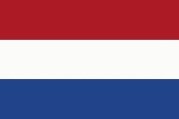Tafel 4:
 Wie funktioniert ein Windrad (2)? Wenn der Wind auf den Rotor trifft, fängt dieser an sich zu drehen. Es entsteht mechanische Energie, die über eine Welle in der Nabe des Windrads auf den Generator im Maschinenhaus übertragen wird. Der Generator wandelt dann, ähnlich wie ein Fahrraddynamo, die mechanische in elektrische Energie um. Diese wird schließlich über ein dickes Kabel an das Energieversorgungsunternehmen weitergeleitet. Damit sich der Rotor möglichst optimal dreht und der Verschleiß der Bauteile der WEA gering gehalten wird, sind verschiedene Vorrichtungen am und im Windrad verbaut. So gibt es z.B. Messinstrumente, die Daten wie Windrichtung und –geschwindigkeit, Drehzahl und Leistung der Anlage erfassen, auf deren Grundlage die WEA gesteuert wird. Auch die Möglichkeiten der Windnachführung und das Rotorblatt-Verstellsystem tragen zur Optimierung des Anlagenbetriebs bei.
Wie funktioniert ein Windrad (2)? Wenn der Wind auf den Rotor trifft, fängt dieser an sich zu drehen. Es entsteht mechanische Energie, die über eine Welle in der Nabe des Windrads auf den Generator im Maschinenhaus übertragen wird. Der Generator wandelt dann, ähnlich wie ein Fahrraddynamo, die mechanische in elektrische Energie um. Diese wird schließlich über ein dickes Kabel an das Energieversorgungsunternehmen weitergeleitet. Damit sich der Rotor möglichst optimal dreht und der Verschleiß der Bauteile der WEA gering gehalten wird, sind verschiedene Vorrichtungen am und im Windrad verbaut. So gibt es z.B. Messinstrumente, die Daten wie Windrichtung und –geschwindigkeit, Drehzahl und Leistung der Anlage erfassen, auf deren Grundlage die WEA gesteuert wird. Auch die Möglichkeiten der Windnachführung und das Rotorblatt-Verstellsystem tragen zur Optimierung des Anlagenbetriebs bei.
Quiz für Groß und Klein
- Welchen Durchmesser hat der Turm der WEA im Lieger Wald an der dicksten Stelle?
An der dicksten Stelle, dem Turmfuß, hat das Windrad einen Umfang von ca. 7,70 m.
- Wie lange benötigt ein Windrad, um die bei seiner Produktion, dem Transport, der Errichtung, dem Betrieb usw. verbrauchte Energie wiederzugewinnen?
Die Energierücklaufzeit beträgt 3-7 Monate.
- Wie lange erzeugt das Windrad für uns Strom?
Die Lebensdauer von WEA wird auf 20 Jahre ausgelegt. I.d.R. laufen WEA jedoch deutlich länger, je nach Standort 30 Jahre und mehr.
- Was ist die Nennleistung einer WEA?
Die Nennleistung gibt an, welche Leistung eine Windkraftanlage unter optimalen Bedingungen bzw. starkem Wind maximal erbringen kann.

How does a wind turbine work (2)? When the wind hits the rotor, it starts to rotate. Mechanical energy is generated, which is transmitted via a shaft in the hub of the wind turbine to the generator in the engine house. Like a bicycle dynamo, the generator then converts the mechanical energy into electrical energy. This is finally forwarded to the power company via a thick cable. Various devices are installed on and in the wind turbine so that the rotor turns as optimally as possible and the wear of the components of the WTG (wind turbine generator) is kept to a minimum. For example, there are measuring instruments that record data such as wind direction and wind speed, rotational speed and power of the generator, on the basis of which the WTG (wind turbine generator) is controlled. The wind tracking options and the rotor blade adjustment system also help to optimise turbine operation.
Quiz for young and old
- What is the diameter of the tower of the WTG (wind turbine generator) in Lieger Forest at the thickest point?
At the thickest point, the base of the tower, the tower has a circumference of about 7.70 m.
- How long does a wind turbine need to recover the energy used in its production, transportation, construction, operation, etc.?
The energy return time is 3-7 months.
- How long does the wind turbine generate electricity for us?
The service life of the WTG (wind turbine generator) is designed to be 20 years. As a rule, however, WTGs (wind turbine generators) run significantly longer, depending on the location 30 years and more.
- What is the rated output of a WTG (wind turbine generator)?
The rated output indicates the maximum output a wind turbine generator can produce under optimal conditions or strong wind.

Hoe werkt een windturbine (2)? Als de wind de rotor treft, gaat de turbine draaien. Er ontstaat mechanische energie, die via een as in de naaf van de windturbine naar de generator in de machinekamer wordt overgebracht. De generator zet dan, vergelijkbaar met een fietsdynamo, de mechanische energie om in elektrische energie. Deze wordt tot slot via een dikke kabel doorgestuurd naar het energiebedrijf. Om ervoor te zorgen dat de rotor zo optimaal mogelijk draait en om slijtage van de onderdelen van de windturbine te beperken, bevinden er zich diverse installaties op en in de windturbine. Zo zijn er bijvoorbeeld meetinstrumenten, die gegevens als windrichting en windsnelheid, toerental en vermogen van de installatie registreren. Op basis daarvan wordt de windturbine ingesteld. Ook de mogelijkheden van het kruisysteem en het verstelsysteem van het rotorblad dragen bij aan het optimaliseren van de werking van de installatie.
Quiz voor groot en klein
- Welke diameter heeft de toren van de windturbine in het Lieger Wald op de dikste plaats?
Op de dikste plaats, de voet van de toren, heeft de toren een omvang van ca. 7,70 m.
- Hoeveel tijd heeft een windturbine nodig om de energie terug te winnen die is verbruikt bij de productie, het transport, de opbouw, de werking ervan enz.?
De amortisatie van de energie duurt 3-7 maanden.
- Hoelang wekt de windturbine stroom voor ons op?
De levensduur van een windturbine wordt op 20 jaar berekend. Doorgaans zijn windturbines echter beduidend langer in werking, afhankelijk van de locatie 30 jaar en meer.
- Wat is het nominaal vermogen van een windturbine?
Het nominaal vermogen geeft aan welk vermogen een windturbine onder optimale omstandigheden of bij harde wind maximaal kan opleveren.

Comment fonctionne une éolienne (2)? Lorsque le vent atteint le rotor, celui-ci se met à tourner. Il se génère une énergie cinétique qui est transmise au générateur situé dans la nacelle par le biais d’un arbre situé dans le moyeu de l’éolienne. Le générateur transforme, similairement à une dynamo de bicyclette, l’énergie cinétique en énergie électrique. Celle-ci est alors transmise au moyen d’un gros câble à l’entreprise de distribution d’énergie. Pour assurer une rotation optimale du rotor et une usure minimale des éléments de construction de l’éolienne, différents dispositifs sont installés à l’extérieur et à l’intérieur de l’éolienne. Ce sont par exemple des instruments de mesure qui saisissent des données comme la direction du vent et la vitesse du vent, le nombre de tours et la puissance de la centrale ; la centrale éolienne est commandée sur la base de ces données. Également les possibilités de contrôle d’embardée et le système de réglage des pales de rotor contribuent à une optimisation du fonctionnement de la centrale.
Quiz pour petits et grands
- Quel est le diamètre du mât de l’éolienne du Lieger Wald à son endroit le plus gros ?
À son endroit le plus gros, le pied du mât, le mât a un diamètre d’environ 7,70 m.
- Combien de temps nécessite une éolienne pour récupérer l’énergie utilisée pour sa production, le transport, l’installation, le service, etc. ?
Le temps de récupération d’énergie est de 3-7 mois.
- Pendant combien de temps l’éolienne produit-elle notre électricité ?
La durée de vie de centrales éoliennes est basée sur 20 ans. En règle générale, les centrales éoliennes ont cependant une plus longue durée de vie, selon le site 30 ans ou plus.
- Qu’est-ce que la puissance nominale d’une centrale éolienne ?
La puissance nominale indique la puissance maximale pouvant être atteinte par une centrale éolienne sous des conditions optimales ou par un vent fort.

